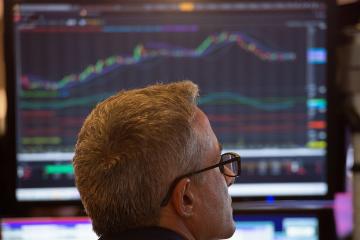Has the Bank Recovered From Its 60% Plunge?
Advertisements
In a world where financial institutions are typically seen as bastions of stability, the reality has shown us that even the most robust banks can falter, leading to surprising outcomesTake the Silicon Valley Bank (SVB) collapse, for exampleOnce a titan in the banking sector with assets amounting to $200 billion, it faced a catastrophic downturn that ultimately led to its demise.
The alarm bells started ringing when SVB announced its decision to sell off a significant portion of its securities portfolio, totaling a staggering $21 billionThis maneuver, ostensibly aimed at optimizing asset allocation, unexpectedly backfired, resulting in a post-tax loss of $1.8 billionIt was an unprecedented event that raised eyebrows across the financial community, provoking queries about the underlying health of the bank.
With this sudden loss, SVB's management was forced into a corner, scrambling for solutions to rectify their predicament
Their response? A hurried attempt to raise $2.25 billion by issuing common and preferred stockHowever, this approach only exacerbated investor unease, as the financial community began to question the very foundation upon which SVB was builtInvestors were left reeling, struggling to comprehend how a bank known for its sound financial practices could find itself in such dire straits, necessitating asset sales at rock bottom prices just to stay afloat.
As the dust settled, SVB's leadership put forth various data in a bid to regain investor confidenceThey insisted that their financial standing was robust enough to handle this unexpected crisis, claiming that selling off some of their shorter-term debt could stave off disasterNonetheless, once market confidence teetered, it cascaded into a full-blown sell-off, akin to a dam bursting under pressure.
The panic was palpable—investors were not easily persuaded
- Has the Bank Recovered From Its 60% Plunge?
- Is Oil's Reign Over as Energy Shifts?
- Markets Rethink Rate Cut Outlook
- Dollar Soars 9%, Index Hits Two-Year High
- US Debt Risks Global Economy
Wall Street reacted with a frenzy, with trading volumes of SVB stock surging an astonishing 22 timesIn the face of such intense selling pressure, Silicon Valley Bank ultimately faced an insurmountable challenge and announced its insolvency.
Reflecting on this incident draws attention to a longstanding trend within financial history: significant financial crises often occur in tandem with broader monetary tightening environments, particularly towards the tail end of such cyclesHistorical precedents abound, from Japan's economic collapse in the early 1990s, fueled by the bursting of real estate and stock market bubbles due to chronic monetary policy tightening, to the Asian financial crisis of 1998, ignited by the devaluation of the Thai baht against the backdrop of a tightening monetary policy in the US.
The early 2000s saw the tragic collapse of many internet companies amidst the burst of the dot-com bubble, set against a backdrop of increasing interest rates that curbed investment and speculative behavior
The 2008 subprime mortgage crisis is perhaps the most telling illustration of how monetary tightening can lead to catastrophic fallout, as borrowers struggled to meet rising repayment obligations, triggering a domino effect that ultimately destabilized the entire global financial system.
In this atmosphere of rising rates, institutions like Lehman Brothers exemplified how lurking vulnerabilities could explode into visible crisesBefore its collapse, Lehman was heavily invested in derivatives and mortgage-backed securities, creating an asset structure that left it vulnerable when liquidity dried upWhen they were forced to liquidate their valuable assets amid a crisis, the consequent market panic set off a chain reaction that dispatched shockwaves through the global financial landscape.
In periods of low interest rates and strong economic growth, companies and individuals can remain obscured by a facade of financial health
However, when the monetary tide turns, previously hidden risks can manifest rapidly, leading to widespread insolvency and loss of confidence across the board.
A closer look at Silicon Valley Bank’s asset allocation as of 2022 brought to the fore vulnerabilities that eventually contributed to its downfallWith a staggering $120 billion in securities compared to $74 billion in loans, SVB's reliance on securities investment became its Achilles' heel when investors lost faith in its financial strength, sparking a withdrawal frenzyCompounding this, the bank’s significant holdings in mortgage-backed securities and other financial assets, while ostensibly sound, turned into liabilities as their market values plummeted under pressure.
In recent years, the global leveraged loan market has burgeoned, with asset-backed securities products proliferating at a dizzying paceIn 2019, outstanding global leveraged loans reached an all-time high of $3.22 trillion

While later figures on this market remain obscure, the potential for destabilization in adverse market environments is clear, raising alarms about the possibility of significant financial fallout if these markets cannot withstand pressure.
In sum, the conditions ripe for financial crisis are palpable today: a tightening monetary policy landscape is already in place; risky assets, while not immediately identifiable, lurk in the depths of portfolios; the proliferation of derivatives like collateralized loan obligations is evident, and the sheer scale of institutions like SVB underscores the risk they pose as potential triggers for broader crisis.
The striking similarities to historical crises serve as a warning tremorIn a climate of deepening fears, markets are prone to significant downturnsHowever, history reassures us that while the journey may be fraught with peril, economies typically recover and return to equilibrium over time.
The question then becomes: how should investors now navigate this tumultuous landscape? First and foremost, maintaining composure amidst the panic is essential
Leave a Comment